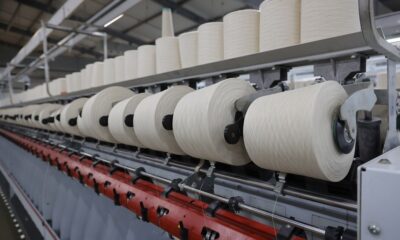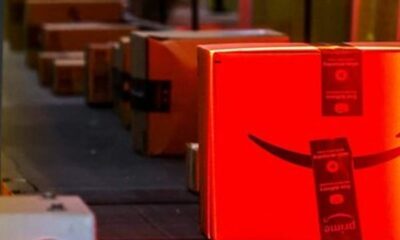Fashion
Acne Studios expands in France with redesigned historic HQ
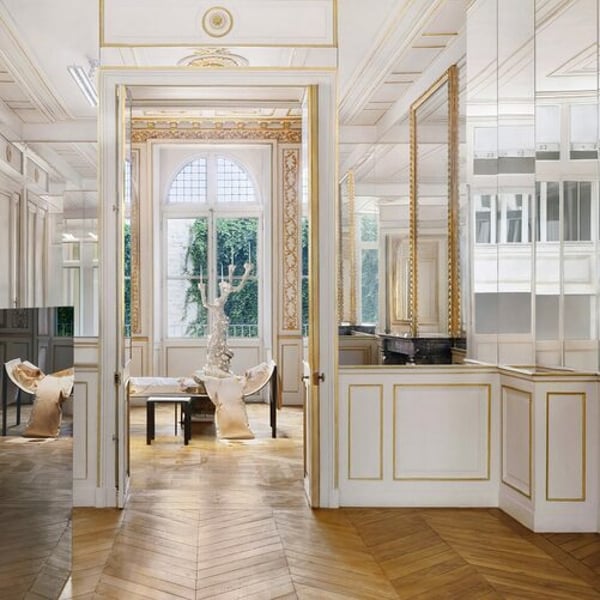
Translated by
Nazia BIBI KEENOO
Published
September 12, 2025
Acne Studios acquires a major new showcase in Paris. Following the opening of its Stockholm headquarters dedicated to design in 2019, the Swedish brand, known for its avant-garde creations, is relocating to Paris, into a beautiful turn-of-the-century townhouse that once housed a pharmaceutical laboratory. The space, tucked away at the end of a courtyard at 48 rue des Petites-Écuries in the 10th arrondissement, brings together all the label’s departments, including part of the women’s and accessories design studios, in a décor blending traces of the past with contemporary works of art.
The design project was conceived by Jonny Johansson, co-founder and artistic director of Acne Studios, in collaboration with the Swedish architecture and design firm Halleroed, which has been collaborating with the brand for over ten years. “The space retains the raw grandeur of the laboratory and mansion built in the 1930s, enriched by a selection of contemporary artworks and furniture from Jonny Johansson’s close circle of collaborators,” the house said in a statement.
The mansion was built in 1926 by the Prevet family, the original owners of Gomenol. The laboratory, which occupied the premises until the 1980s, was renowned for its production of tinctures and plant-based oils, particularly an essential oil extracted from niaouli, Goménol. The former laboratory now features a spacious showroom on the ground floor, complete with raw concrete columns, an original vaulted glass ceiling, and white-painted walls, as well as a fitting room for VIP customers.
The idea was to harmoniously integrate these historic elements into the new layout. As Jonny Johansson explains: “Our main objective was to respect the history of the place while infusing it with a fresh, modern energy. The building itself has an incredible architectural presence. It’s steeped in history, and you can feel that when you walk through its rooms. We didn’t want to erase this effect.”
“On the contrary, we wanted to create a kind of dialogue between past and present, guided by the original structure. It’s important to preserve these traces of the past, not only out of respect, but also because it shapes the atmosphere and energy of the building and creates a basis for the kind of creative work we do,” he continued.
The entrance to the building, which serves as a reception area, retains meticulously restored gilded moldings, friezes, woodwork, and parquet flooring. Similarly, the canteen on the mezzanine floor features its original tiled floor. It features large, light-wood communal tables, which can also be used for meetings or work sessions. It adjoins a kitchen and leads to a sunken outdoor garden. The offices and design studio are on the first floor.
The entire building, which will accommodate around 80 employees, is adorned with designer furniture, including the garden seating and showroom sofas designed by British designer Max Lamb, a long-time collaborator of Acne Studios. The same goes for lighting artist Benoît Lalloz, who created a bespoke light installation. In addition, the courtyard features works of art, including Daniel Silver’s marble sculpture and candelabras by Sylvie Macmillan.
This article is an automatic translation.
Click here to read the original article.
Copyright © 2025 FashionNetwork.com All rights reserved.
Fashion
Major challenges ahead of Bangladesh’s LDC graduation: ICCB editorial
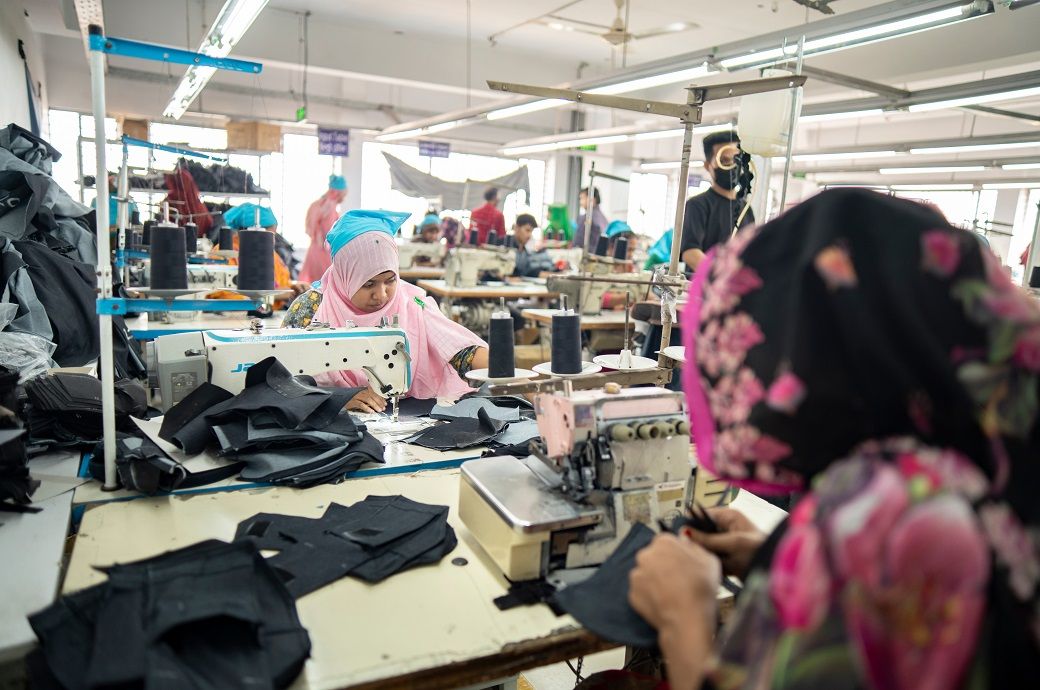
Upon graduation, Bangladesh will gradually lose the duty-free and quota-free market access it currently enjoys in major destinations like the European Union, Canada and Australia.
Though Bangladesh has met all three essential UN criteria for graduation from the LDC status, maintaining economic momentum and competitiveness after that needs significant internal restructuring, the ICCB has said.
An editorial in its latest newsletter said unless productivity improves and the country diversifies into new markets and higher-value apparel categories, the RMG industry’s edge may weaken.
For the readymade garment (RMG) industry—which accounts for over 80 per cent of export earnings—tariffs of 10-12 per cent could sharply reduce competitiveness, an editorial in the July-September 2025 issue of ICCB News Bulletin said.
Unless productivity improves and the country diversifies into new markets and higher-value apparel categories, its edge may weaken, it noted.
“Graduation will end concessional loans and grants, forcing Bangladesh to rely on costly commercial borrowing. With over $100 billion in external debt, rising global interest rates could strain repayment capacity. Stronger debt management, higher reserves, and export diversification are crucial to maintain fiscal discipline and ensure long-term macroeconomic stability,” said the editorial.
Global trade trends compound this challenge. Rising protectionism, complex supply-chain standards and non-tariff barriers such as carbon border taxes and due-diligence laws threaten traditional export models. As the global apparel market increasingly prioritises sustainability, traceability and labour compliance, Bangladesh must reposition itself as a responsible and innovative manufacturing hub, suggests the editorial.
At the same time, weaknesses in education, healthcare, and social protection must be addressed to ensure inclusive growth. A post-LDC Bangladesh cannot afford to leave its human capital behind. Skill development, vocational training, and greater female participation in the workforce will determine how equitably prosperity is shared.
Graduation also presents an opportunity to diversify beyond garments into IT, pharmaceuticals, leather agro-processing, service sector and shipbuilding—sectors critical for long-term competitiveness, it observed.
The privileges of the past will fade and the discipline of the future will demand more reform, more innovation and greater resilience, the editorial added.
Fibre2Fashion News Desk (DS)
Fashion
ITMA ASIA + CITME 2025 returns to Singapore after 20 years
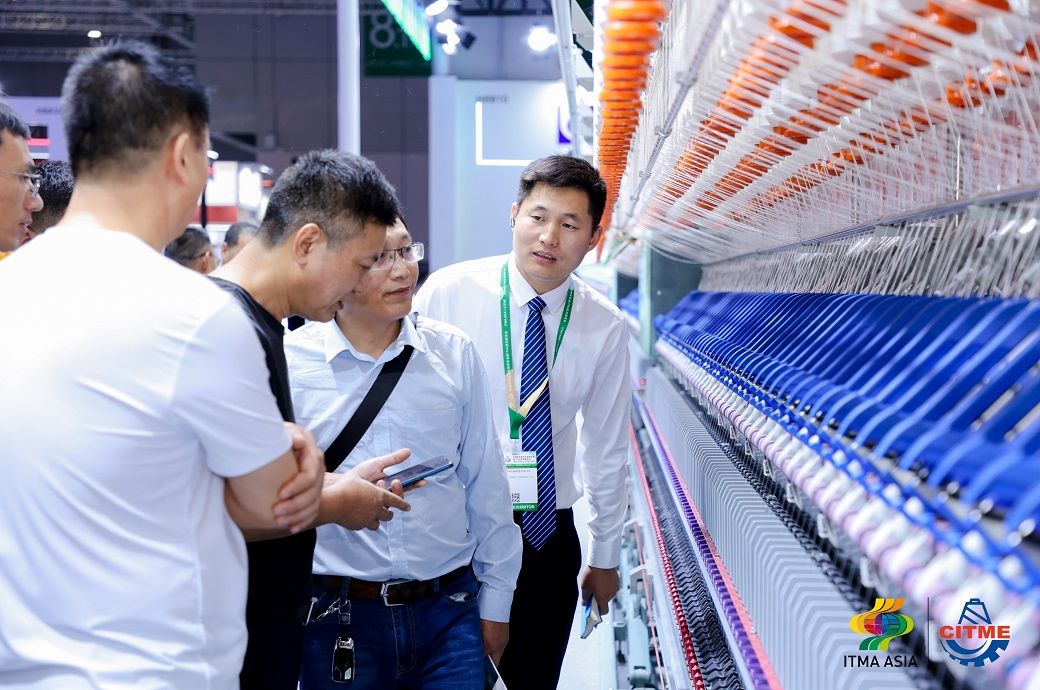
The four-day exhibition has attracted the participation of major textile machinery brands from around the world. Over 840 exhibitors from 30 countries and regions are showcasing their latest technologies and solutions to trade visitors from Asia’s leading textile and garment manufacturing hubs.
ITMA ASIA + CITME 2025 opens at Singapore Expo, marking its return after 20 years.
The four-day show features 840 exhibitors from 30 countries across 19 sectors, showcasing innovations in sustainability, digitalisation, and productivity.
Highlight sectors include finishing, spinning, and knitting, with a Sustainability Forum on October 30.
Occupying over 70,000 square metres of gross space, the exhibition features 19 product sectors, covering the entire textile and garment manufacturing value chain. Spotlighting solutions that advance sustainability, digitalisation and productivity, exhibits range from spinning, weaving and knitting to garment making, textile processing to automation, recycling and other products and services.
Owned by CEMATEX (the European Committee of Textile Machinery Manufacturers), ITMA ASIA returns to Singapore after 20 years. It was first held at the Singapore Expo in 2001 and repeated in 2005.
Combined with CITME, a textile machinery exhibition owned by the China Textile Machinery Association (CTMA) and The Sub-Council of Textile Industry, CCPIT TEX since 2008, the combined exhibition is staged outside of China for the first time.
“This Singapore edition marks a new milestone for ITMA ASIA + CITME. By bringing the latest machinery and digital solutions closer to growth markets across South and Southeast Asia and the Middle East, our aim is to offer a trusted platform for mill owners to source cutting-edge technologies that support operational modernisation and long-term competitiveness, particularly in advancing sustainability,” said Mr Alex Zucchi, President of CEMATEX.
Mr Gu Ping, President of CTMA added, “Amid a new wave of digital revolution, the global textile and textile machinery sectors now stand at the forefront of strategic transformation. As a premier platform on textile machinery, the exhibition not only showcases end-to-end solutions but acts as a bridge for efficient business collaboration across the supply chain.”
For regional textile machinery buyers in the region, ITMA ASIA + CITME, Singapore 2025 provides a strategic platform to source for cost-effective technologies that boost operational performance while ensuring compliance with sustainability standards and regulations.
Exhibiting countries
CEMATEX countries and China, both of which have robust textile machinery sectors, have strong presence on the show floor. Their exhibitors take up almost 70% of the exhibit space.
A total of 281 exhibitors from the nine CEMATEX countries booked over 38% of the net exhibit space. From among CEMATEX countries, Italy fields the largest contingent of 98 exhibitors, followed by Germany and Switzerland.
Chinese exhibitors totalling 310 book 30% of the exhibit space. From the rest of the world, India tops the list with 87 exhibitors.
Top product sectors
Of the 19 product sectors, finishing is the largest sector with 184 exhibitors; it occupies 22% of the exhibit space. The second biggest sector is spinning (167 exhibitors with 19% of exhibit space).
Other prominent sectors are knitting (99 exhibitors, 15% of exhibit space), weaving (80 exhibitors, 11% of exhibit space) and printing (56 exhibitors, 10% of exhibit space).
According to the show owners, many of the exhibits will spotlight solutions in circularity, resource efficiency, waterless processing, and renewable energy integration as the goal is to help Asian manufacturers move beyond volume-driven growth to embrace sustainable, impact-driven competitiveness.
ITMA ASIA + CITME, Singapore 2025 is organised by ITMA Services and co-organised by Beijing Textile Machinery International Exhibition Company.
Held alongside the exhibition is the ITMA Sustainability Forum: Accelerating the Green Transition. Taking place on 30 October, it is a half-day forum presented by CEMATEX with Singapore Fashion Council as the Programme Partner.
Note: The headline, insights, and image of this press release may have been refined by the Fibre2Fashion staff; the rest of the content remains unchanged.
Fibre2Fashion News Desk (HU)
Fashion
UK’s clothing imports mark strong rebound in August 2025
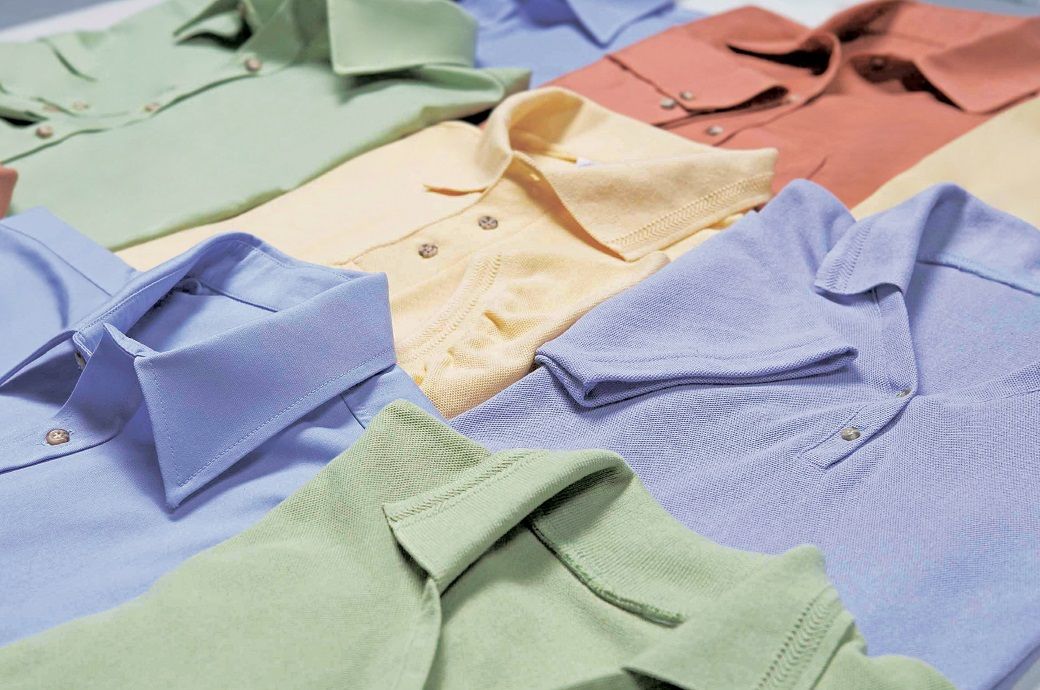
Imports of textile fabrics remained steady year on year (YoY), while fibre imports declined. In August ****, textile fabric imports totalled £*** million (~$***.** million), unchanged from August ****. Fibre imports, however, fell to £** million (~$**.** million) from £** million a year earlier, continuing a downward trend influenced by global raw material price volatility and sustainability-led sourcing shifts.
In the second quarter (Q*) of ****, the UK’s clothing imports reached £*.*** billion (~$*.*** billion), up *.** per cent from £*.*** billion in Q* ****. Although this quarterly growth was slightly weaker than in Q* ****, it indicates steady recovery amid stabilising global supply chains and resilient consumer appetite. Fabric imports during Q* **** were valued at £*.*** billion, while textile fibre imports reached £** million, compared to £*.*** billion and £*** million, respectively, in the same quarter of ****.
-

 Fashion1 week ago
Fashion1 week agoChinese woman charged over gold theft at Paris Natural History Museum
-

 Tech7 days ago
Tech7 days agoThis Smart Warming Mug Is Marked Down by $60
-

 Fashion1 week ago
Fashion1 week agoeBay UK seller fee removal sends revenue down but profits rise
-

 Entertainment1 week ago
Entertainment1 week agoJohn Grisham unveils his first-ever mystery, “The Widow”
-

 Tech1 week ago
Tech1 week agoEaster Island’s Moai Statues May Have Walked to Where They Now Stand
-

 Tech1 week ago
Tech1 week agoOpenAI has slipped shopping into ChatGPT users’ chats—here’s why that matters
-

 Fashion1 week ago
Fashion1 week agoNew EU strategy proposed to shape global clean, resilient transition
-

 Business1 week ago
Business1 week agoDhanteras Engine Fires Up Auto Market: Over 1 lakh Cars Delivered In 24 Hours






